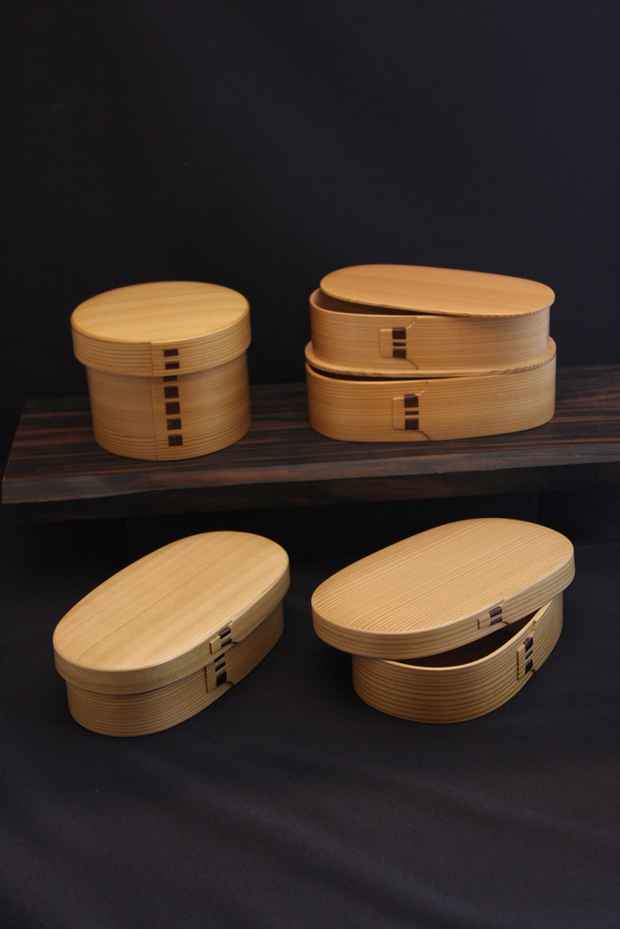Shunji Kurimori, Kenji Miyata & Hiroyuki Hashino Exhibition
The Nippon Gallery

This event has ended.
The Nippon Gallery (at The Nippon Club) presents An Exhibition of Beautiful Crafts from Japan, in association with Akita Takumi Kai.
The traditional crafts from Japan introduced at this exhibition demonstrate the wealth of natural resources Japan, the long-established methods of the area’s craftsmanship, and the relationship between humanity and nature. As “crafts with local flavor” that incorporate all the region’s qualities, or as traditional tools that still prove useful today, they integrate easily into one’s lifestyle. In their pursuit of beauty and functionality, three artisans craft works of austere elegance and careful design that are made for utility.
This exhibition of traditional and modern Japanese Crafts features three renowned Masters, Shunji Kurimori, Kenji Miyata & Hiroyuki Hashino. Their works have been displayed at major national and international venues and have received prestigious design awards.
Mage-wappa is a traditional craft that originated in Akita Prefecture. It involves bending strips of Japanese cedar wood to make food vessels and other household items. Using straight grain Akita Cedar, Mage-wappa art craft was first developed in the beginning of the 17th Century. Its first form took the shape of a lunch box made by a woodcutter in the Odate area of Northern Japan. The Lord of Odate Castle then encouraged the technique in a samurai’s work and it grew in popularity. In recent years the craft has been used as a base for the development of new techniques and modern design. Popular for its straight grain and light weight, the Akita Cedar used in these products is more than 250 years old. Shunji Kurimori is a mage-wappa artisan with 46 years of experience and an 18 times winner of the Good Design Award, and an officially recognized Contemporary Master Craftsman. Committed to using traditional craftsmanship to meet the needs of today, Kurimori has come up with several groundbreaking mage-wappa designs, including tapered cups and nesting food containers. A true innovator, he is driving the evolution of his craft.
Hashino’s unique and innovative designs are crafted from a rare hardwood tree whose wood has a very beautiful grain and texture. In Japanese this tree, a member of the Birch family, is called “OnooreKanba”, which means “breaking the hatchet birch”. Hashino’s products are made with careful consideration for their materials, shape and function produce a more beautiful and timeless result. Hashino often travels to the United States to introduce his products internationally. In 2012, he featured his products at Cherry Blossom Festival at Sakura Park, and also exhibited at American Craft Show in New York. In 2013, he received the Good Design Award. More than 30 years ago, Hashino produced his first wooden shoehorn and has been making these beautiful wooden tools with long, smooth carves ever since. In 2005, The Imperial Household Agency brought one of this signature pieces for the Emperor of Japan. Since then, three more sets of Hashino’s shoehorns have also been stocked at the prestigious Nara Hotel, where the Emperor regularly stays.
Kenji Miyata is the 4th President of Hako-Cho, the long-established company with prestige famous for its own craftsman technique with Paulownis tomentosa squeezing pieces of fabric into the wood
grooves. Utilizing the technique no one else can do, Miyata enclaves pictures of items that signify good luck in Japan including bells, gourds, dragonflies, and ogi (fans), on cabinets and drawers, and lines pieces of kimono with washi paper. The technique makes his products gorgeous and splendid. Miyata says he wants his products to be appreciated by wider audience. He is very excited about his fist exhibition in New York and hoping Japanese crafts to be recognized globally and used and loved by people all over the world even hundreds of years later. For the past few years, he has been teaching his teen employees to get the original technique to be known to the next generation.
The exhibited works will include daily commodities; Hashino’s shoehorn introduced by the Imperial Household Agency to the Emperor and his twisted combs that he received the Good Design Award for, Kurimori’s female lunch boxes that he received the Good Design Award for and his sake bottles &cups he received the Long Life Design Award for, and Miyata’s small cabinet drawers and hand mirrors, etc.
Media
Schedule
from October 16, 2015 to October 22, 2015